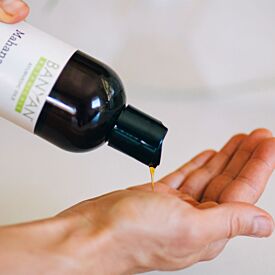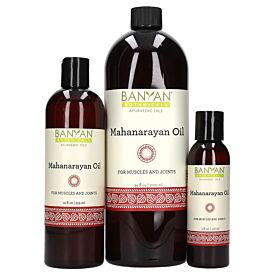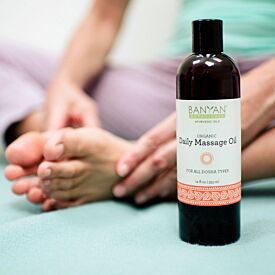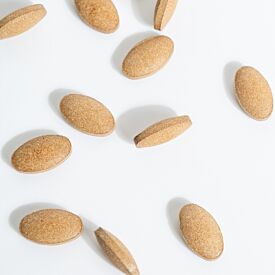Pacifying Low Back Discomfort
Your client, a 33 year-old female (vata-pitta prakriti), comes to you with a long history of lower back discomfort. She has seen multiple practitioners without any findings of a cause. She is a single mother of three children and works at a local grocery store. The key principles to supporting a healthy low back include:
- Relieve stagnation, such as constipation
- Moderate and healthy exercise, such as yoga and walking
- Decreasing vata, with therapies such as basti
- Decreasing fear and helplessness, while instilling a sense of courage and an empowered self
- All of the above
Answer: E
Bringing health to the lower back follows just two simple steps in Ayurveda—relieve stagnation and decrease vata. Bringing a sense of strength, support, and courage can also do wonders to counter vata. To that end, yoga and harnessing the health of the second and third chakras can make dramatic shifts in low back health. Our client would benefit, both physically and mentally, from a well-rounded approach that caters to all of the above.
While inspiring your clients to incorporate a general vata-pacifying diet and lifestyle goes without saying, Ayurveda also encourages targeting the low back with vata-pacifying therapies.
- Bowel movement regularity. If the bowels are not moving with ease, then vata (specifically the downward apana vayu, crucial for eliminating excess vata) is also not moving with ease. Bringing regularity to the client’s bowel movements can be the quick fix to their back problems and should be one of the first things you ask about! Consider Triphala every night to help with bowel regularity. Triphala will also help with toxins in the colon (ama), which also can affect the nerves and musculature of the low back. Also be sure that the client is drinking ample amounts of water to help both elimination channels (stool and urine).
- Massage. Before taking a shower, have the client massage their lower back with Mahanarayan Oil. This ancient recipe of herbs calms and grounds vata and soothes pain and stiffness. The oil itself will also bring a dense, grounding effect to the lower back and bring oleation to the dryness of vata. Encourage a full self-massage (abhyanga) with Daily Massage Oil, Vata Massage Oil, or an oil appropriate for the doshic type.
- Heat. If the client has vata or kapha type pain, heat will be their best friend. After application of oil, cover the area with a covered hot water bottle (being careful to not burn the skin). A hot bath or steam therapy is a great alternative and will calm vata throughout the body.
- Kati Basti. This ancient therapy allows a pool of warm oil to sit and settle over the lower back. Have the client lie on their abdomen. Mix whole-wheat flour with water, until the consistency is like firm dough. Create a large ring with the dough and place it over the lower back. Seal the dough onto the skin with just a few drops of water and by working the dough onto the skin with your fingers. You will want to make the edge of the ring that is closer to the head a greater height than the edge closer to the bottom. Warm Mahanaryan Oil to medium-high warmth (put a drop on your wrist and make sure it does not burn). Use a turkey baster and fill the donut. Let the oil sit for 30 minutes. When the time is complete, use the turkey baster to remove the oil. Massage the remaining oil into the skin. You may do this therapy several times a week initially and then space treatments out.
- Basti. Basti (translated roughly as enema therapy) is the king of all therapies for vata and is a miracle worker for low back health since it works very proximally to the area of the low back. It directly goes to the root of vata—the colon. For those with more vata low back discomfort, it is likely that the dry quality is high. In these cases, incorporating anuvasana (oil) basti will show great benefits. For a detailed article on basti, its many benefits, and instructions, please read Basti: The Primary Treatment of Vata.
-
Yoga. In the previous article of this series, we talked about the importance of a strong core and abdomen for low back health. We also talked about how healthy movement supports the low back. Yoga can do both, as well as ground and pacify vata.
- Strengthen the abdomen with core poses, such as boat pose, raised leg pose, plank pose, and side plank pose. Throughout the practice, make sure the abdominal muscles are engaged, supporting the back in every pose.
- Lunges and hip openers will strengthen the lower body, as well as ground vata.
- Balancing poses, such as tree pose and eagle pose, pacify vata by bringing stability to the mobile quality.
- In general, slow movements and spending more time in each pose is healthy for vata.
- Pranayama that engages the abdomen will support the low back. Steady and slow Kapalabhati, especially if the client can (slowly and with much time and patience!) work his or her way up to two sets of five hundred, will leave your client with a toned and strong core.
- Self-Empowerment. Everyone needs a cheerleader, and a practitioner that believes in their client is a very powerful thing. Speak positively with strong words of encouragement. Advise your client to do the same to themselves everyday. Have them write out a vision for a stronger, capable, empowered self and have them read it everyday. Teach them self-love. The color of the second chakra is orange and third chakra is yellow. Bring these colors into the environment with flowers and in clothing. Have the client practice meditating on the flame of a candle.
- Herbs. Don’t forget to support vata with Healthy Vata and Vata Digest.












